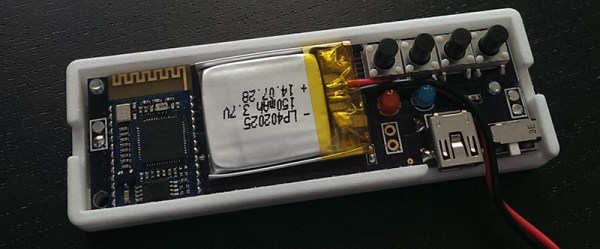Beats headphones are very popular, they’re everywhere, and they sound like trash. That’s a shame, because there’s a century of recorded music out there that sounds really good. [WΛLLTΞCH] forgot about [Dre] and started looking into a better way to listen to music. He came up with bone conduction transducers and started one of the most interesting projects for this year’s Hackaday Prize.
Instead of driving a speaker cone that vibrates the air, passes through the middle ear, and vibrates the eardrum, bone conduction amplifiers bypass the outer and middle ear completely. Not only does this produce a clearer reproduction of sound, but it’s also great for anyone with an abnormality in the ear canal, ear drum, or the tiny bones of the inner ear.
[WΛLLTΞCH]’s first prototype is using a bone conduction amplifier and a cheap Bluetooth module, stuffed into a small 3D printed case. With two 1W transducer modules, it was enough for a proof of concept. The final design is vastly more integrated, with a dedicated Bluetooth audio module. To this, [WΛLLTΞCH] is adding microphones and the ability to take calls over Bluetooth. It’s a great project, and something that could make a great product, something we’re also looking for in this year’s Hackaday Prize.


















